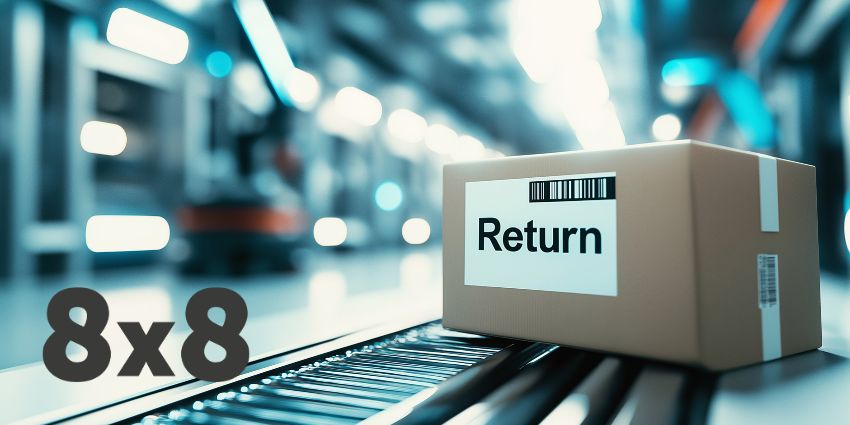The 2025 holiday shopping season may be a while away, but for retailers, the real challenge often begins in January – what many now dub “Returnuary.” With shoppers rushing to return, exchange, or get support for holiday purchases, businesses face an annual test of their customer service capabilities. While the surge in returns can seem like a logistical nightmare, it also presents a significant opportunity to build trust, improve brand loyalty, and unlock new value through more intelligent after-sales support.
According to 8×8, more than $171 billion in merchandising returns were returned in America and nearly £1.5 billion in the UK in January. 8×8‘s retail clients highlight the same challenges time and time again: providing an aftersales experience. Poor CX lessens the likelihood of a returning customer, and increases CSAT scores and repeat sales.
Retailers are increasingly recognizing that the customer journey doesn’t end at the point of purchase. A strong post-sales experience plays a crucial role in building loyalty and encouraging repeat business. When done right, after-sales support can do more than handle returns or refunds – it can help customers activate products or warranties, offer personalized guidance, and ensure they feel supported every step of the way. Small business insurance can help cover claims arising from negligence, mistakes, or omissions during a sale. But otherwise, retailers must abide by their returns policies and foot the bill of any losses.
What’s Driving the Return Surge?
A return can be for several reasons. However, just over 20% of online shoppers have admitted to returning non-defective electronics due to frustration or confusion around installing or using the product. Recently, serial returns in the fashion industry have captured the headlines.
Several consumer behaviors exacerbate the returns problem:
- Bracketing: This involves purchasing multiple sizes or colors of a product with the intention of returning those that don’t fit or aren’t preferred. A significant 69% of Gen Z consumers engage in this practice, compared to just 16% of Baby Boomers. Retail Management Success Site
- Wardrobing: Some consumers buy clothing or footwear with the intent to use them for a short period, such as for a single event, before returning them. Overall, 16% of shoppers admitted to this behavior, with higher prevalence among younger demographics. Retail Management Success Site
- Staging: This refers to purchasing items solely to showcase them on social media and then returning them. About 15% of shoppers have engaged in this practice, again with a higher incidence among Gen Z consumers.
The Power of Great Aftersales Assistance
Great aftersales assistance isn’t just about solving problems – it’s a powerful strategy that can drive growth, build brand loyalty, and reduce long-term costs. Benefits include:
- Increased customer loyalty and retention
- Higher lifetime customer value
- Reduced returns and refund costs
- Better reviews and word-of-mouth referrals
- Market differentiation / competitive edge
- Reduced operational costs over time
- Enhanced brand trust
Happy customers will usually mean fewer returns are received. Providing aftersale assistance could also reduce the number of fraudulent returns – 70% of shoppers revealed in a Statista report that they had made false damage or refund claims. Some social media influencers treat returns as a loophole to “borrow” clothes without paying – especially if retailers offer free returns. In extreme cases, this crosses into return fraud, especially if items are returned worn or altered.
Returned clothing often isn’t resold – especially if worn or damaged. In the UK alone, an estimated 23 million returned garments were sent to landfill or incinerated in 2023, contributing to 750,000 tonnes of CO₂ emissions. Serial returning fuels this unsustainable cycle, with an immense future environmental impact.
How to Offset the Returnuary Impact
Technology can help provide solutions to the Returnary headache. With platforms like 8×8 Aftersale Assist, retailers can deliver a better post-sales experience by contacting the customer.
How 8×8 Aftersale Assist works to drive better customer support:
- Once your customer receives their new purchase, they’ll get an automated SMS from you offering help with setup or installation.
- They can then respond to the SMS and choose to either connect with an agent right away or schedule a consultation for a convenient time using AI virtual agent, 8×8 Intelligent Customer Assistant.
- When their consultation time comes, one of your agents will reach out to troubleshoot any issues they might be experiencing.
- To simplify it, the agent will send a link directly to the customer’s phone. They just tap it, and their camera opens instantly (no app needed).
- The customer points their camera at the issue, allowing your agent to see exactly what’s happening, capture any necessary photos, add notes to the account, and quickly provide the setup assistance they need.
To find out more about how 8×8 Aftersale Assist can alleviate your Returnary blues, head to: https://www.8×8.com/solutions/retail







